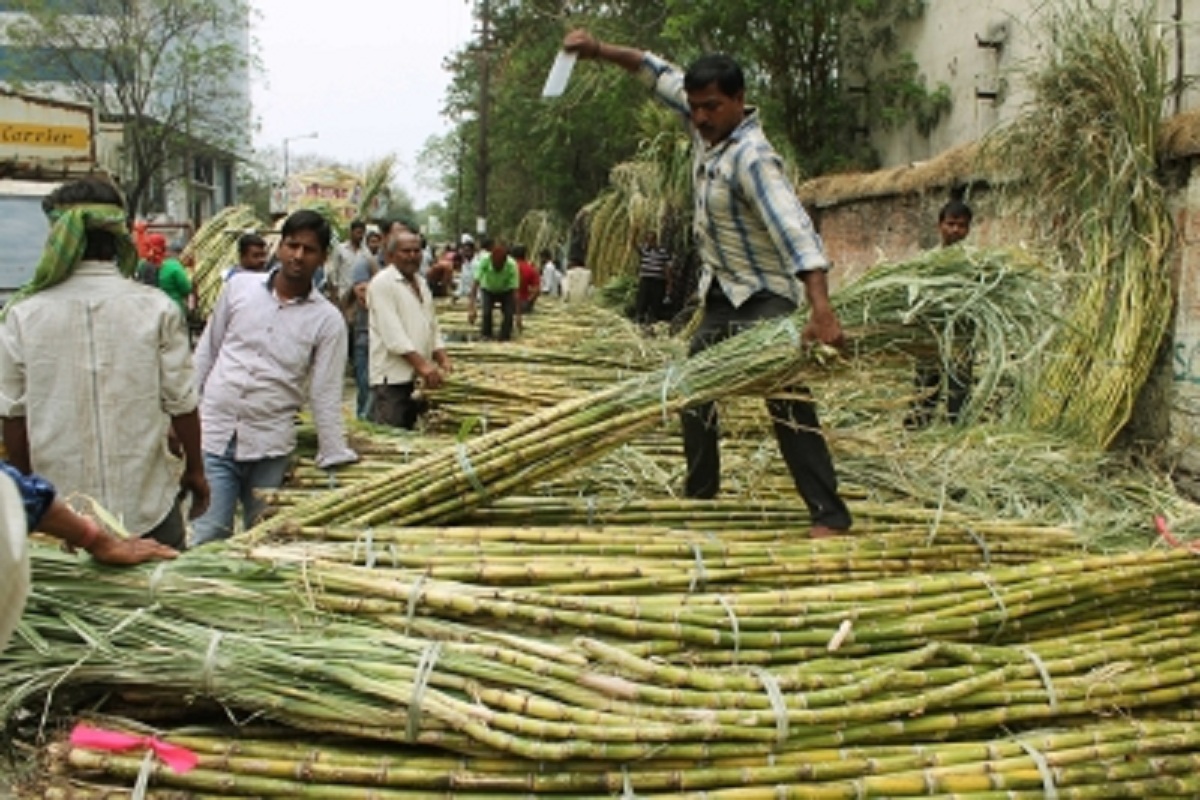Pappu Yadav talks about Modi-Adani, Threats by Bishnoi & more
Lok Sabha MP PappuYadav in conversation with The StatesmanTalk,’ questions the government over the privatization of various sectors.
By 2025-26, eight Nano urea plants with production capacity of 44 crore bottles equaling 195 LMT of conventional urea will be commissioned.

Representational Image [Photo: IANS]
The Cabinet Committee on Economic Affairs (CCEA) chaired by Prime Minister Narendra Modi on Wednesday approved major welfare decisions for farmers including a Rs 3,70,128.7 crore unique package of innovative schemes, and a higher sugarcane sale price at Rs 315 per quintal for 2023-24.
The Fair and Remunerative Price (FRP) of sugarcane at Rs 315 per quintal for sugar season 2023-24 is on the basic recovery rate of 10.25 per cent, Information and Broadcasting Minister Anurag Thakur told newspersons after the CCEA meeting. Sugar mills are paying farmers’ dues promptly, he said.
Advertisement
The Minister said the cost of production of sugarcane for the season 2023-24 is Rs 157 per quintal. This FRP of Rs 315 per quintal is higher by 100.6 per cent over production cost. The FRP for sugar season 2023-24 is 3.28 per cent higher than the current sugar season 2022-23 price of Rs 305 per quintal.
Advertisement
It was decided to provide a premium of Rs 3.07 per quintal for each 0.1 per cent increase in recovery over and above 10.25 per cent, and reduction in FRP by Rs 3.07 per quintal for every 0.1 per cent decrease in recovery, the Minister said.
The FRP has been determined on the basis of recommendations of the Commission for Agricultural Costs and Prices (CACP) and after consultation with State Governments and other stakeholders, he said.
Announcing the multi-scheme package for farmers, Health and Family Welfare Minister Mansukh Mandaviya said the package has four components. The first component of the package is the largest, with an allocation of Rs 3,68,676.7 crore, and pertains to the Urea Subsidy Scheme under which farmers will get urea at a constant price of Rs 242 per bag for three years till 2024-25.
The second is PM Programme for Restoration, Awareness Generation, Nourishment and Amelioration of Mother–Earth (PM-PRANAM) to promote alternate fertilizers and balanced use of chemical fertilizers.
The third part is Market Development Assistance (MDA) for promoting Organic Fertilizers from Gobardhan Plants with an allocation of Rs. 1451.84 crore. The fourth component is introduction of sulphur coated Urea (Urea Gold) to address sulphur deficiency of soil and save input costs for the farmers.
Mandaviya said the bouquet of schemes is focused at overall well-being and economic betterment of farmers by promoting sustainable agriculture. The initiatives will boost farmers’ income, strengthen natural and organic farming, rejuvenate soil productivity, and ensure food security.
The CCEA approved continuation of the Urea Subsidy Scheme to ensure constant availability of urea to the farmers at the same price of Rs 242 per 45 kg bag excluding taxes and neam-coating charges.
The urea subsidy scheme is apart from the recently approved Nutrient Based Subsidy of Rs 38,000 crore for Kharif season for 2023-24. The farmers need not spend extra for purchase of urea, and this will help moderate their input costs.
At present, the MRP of urea is Rs 242 per 45 kg bag of urea (exclusive of charges towards neam coating and taxes as applicable), whereas the actual cost of the bag comes around Rs 2200.
The Scheme is wholly financed by the Government of India through budgetary support. The continuation of Urea Subsidy scheme will also maximize indigenous production of Urea to reach self-sufficiency levels.
Due to ever changing geopolitical situation and increased raw material prices, fertilizer prices have been increasing multifold globally over the years. But the Government protected farmers from the steep fertilizer price rise by increasing the fertilizer subsidy.
In its endeavour to safeguard the farmers, the Government has increased the fertilizer subsidy from Rs 73,067 crore in 2014-15 to Rs 2,54,799 crore in 2022-23.
By 2025-26, eight Nano urea plants with production capacity of 44 crore bottles equaling 195 LMT of conventional urea will be commissioned.
Nano fertilizer releases nutrients in a controlled manner contributing to higher nutrient use efficiency, while being cheaper in cost. The application of Nano Urea has demonstrated increase in crop yield.
The indigenous production of urea has increased from the level of 225 LMT during 2014-15, to 250 LMT during 2021-22. In 2022-23, the production capacity has increased to 284 LMT. These along with Nano Urea Plants will reduce the current import dependency in urea and finally make the country self-sufficient by 2025-26.
The PM Programme for Restoration, Awareness Generation, Nourishment and Amelioration of Mother–Earth (PM-PRANAM) is conceived due to the need to go back to more natural ways of farming and promotion of balanced and sustainable use of chemical fertilizers.
Promoting natural and organic farming, alternate fertilizers, innovations like Nano Fertilizers and bio-Fertilizers can help in restoring fertility of Mother Earth, Mandaviya said. The States will be rewarded for achieving a balanced use of chemical fertilizers.
The Market Development Assistance (MDA) scheme will provide Rs 1500 per MT to support marketing of organic fertilizers, viz., Fermented Organic Manures (FOM)/Liquid FOM/Phosphate Rich Organic Manures (PROM) produced as by-product from Bio-gas Plants/Compressed Biogas (CBG) plants, set up under the umbrella GOBARdhan initiative.
The sulphur coated urea (Urea Gold) is being introduced in the country for the first time. It is more economical and efficient than the currently used Neam coated urea. It will address sulphur deficiency in the soil in the country. It will also save input costs for the farmers and also raise incomes for farmers with enhanced production and productivity.
Advertisement